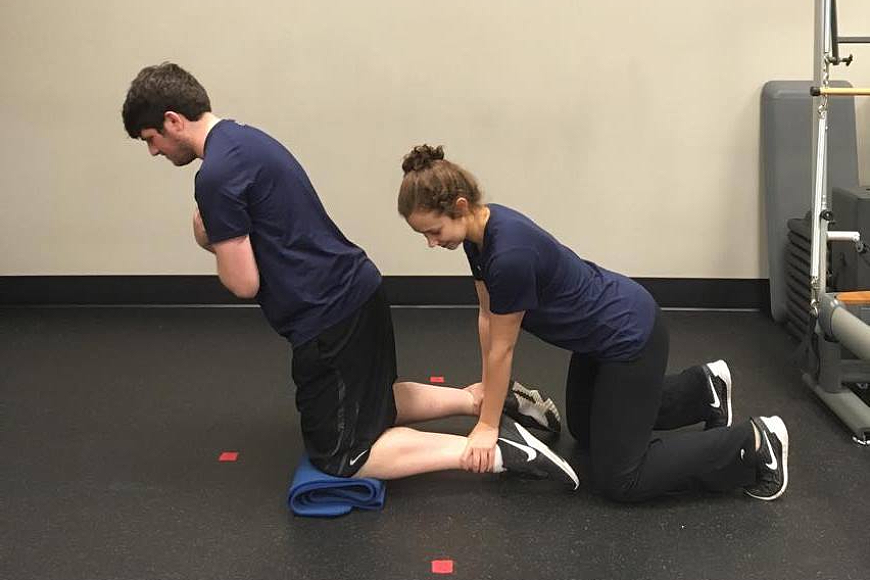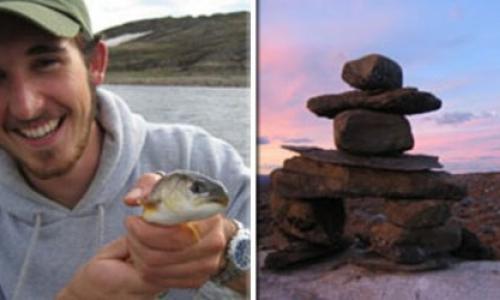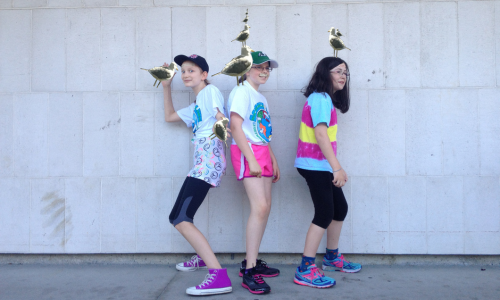
I came into my first co-op job at Physiostation & Sport Injury Clinic as a Student Kinesiologist with no background knowledge of what my days would look like at work. Luckily, I was trained by the existing Student Kinesiologist and shown the ropes before I was cast out on my own. After a few weeks of shadowing and observation, I had learned the basics of my expectations. I quickly had to adjust to becoming the clinic ‘yes-girl’. Physiotherapist forgot to email a client? I’m on it. No time to clean up after treatment? My concern now. Does someone need to be taught how to do some lunges? I’m your girl.
Although each day is unpredictable, I’ve settled into a groove. When I get to work, I get my desk set up for the day. I settle in and take note of clients that are coming to see me, and what exercises I will be working on with them. The physiotherapists stop by my desk after treating their clients to explain to me what their client’s injury and exercise prescription is. When the client comes to see me, I run them through their new exercises; checking for correct form, ensuring the client is moving pain-free and explaining the benefit of each exercise. Sometimes, I’m put in charge of applying kinesiology tape to support a client’s injury and promote safe movement. After an exercise session, I construct an email for the client with all of their exercises and send it to them with individualized notes to ensure they can exercise with confidence on their own. This physiotherapist-kinesiologist-client-information-transfer-cycle is a constant throughout each day. Some days are slow, and I don’t see many clients. Other days, I don’t get a chance to sit down.
When I complete all my daily maintenance tasks, I spend my time researching different ways to rehabilitate injuries, different applications of kinesiology tape, and the background and basis of each individual therapy technique used by the physiotherapists. For example, the clinic recently added shockwave therapy to their list of treatments. It has been found that shockwave therapy is beneficial to those who suffer from thickening of the tendons and stiffening of the joints as it helps break up adhesions and promote healing of the area (Doggart, Burden & Catlow, 2016). I’ve learned a lot in my down time, but most of the knowledge I have gained during my placement comes from the physiotherapists. I pester them with questions about treatments and get them to show me new exercises or have them demonstrate the use of different treatments on me. More than once, I have been the practice dummy, or pin cushion, for acupuncture techniques or intramuscular needling and stimulation. These different dry needling and stimulation techniques have been shown to assist in pain management in injured or distressed areas of the body by aiding in muscle relaxation (Rock & Rainey, 2014).
On my busy days, I don’t learn so much about physiotherapy techniques, but more about stress management, task prioritization and effective communication. In order to keep up with the requests of five physiotherapists, I need to be efficient. I have had to figure out how to manage seeing upwards of four clients simultaneously, as well as making sure every client’s exercise program has been created and sent off to the appropriate owner. During these busier days, I sometimes start to feel overwhelmed and I have to remind myself to take things one step at a time. I have learned to speak with clients efficiently without confusing them with fast-talking or skipping steps. I have had to learn keep up with the lightning-fast speech of the physiotherapists and make sure I understand everything they are saying. After my training, I was integrated into the clinic and had to work by myself. Being left to work on my own for the first time at a new job definitely pushed me out of my comfort zone and forced me to adapt. I was pushed to become a better multi-tasker because I took on all of the tasks of the Student Kinesiologist; a multitude of daily cleaning duties as well as patient exercise program preparation, demonstration and finalization. Additionally, I have become a much better communicator and listener, more willing and open to asking for help, as well as understanding and clarifying instructions that are given to me.
I’ve learned that a lot goes on behind the scenes at clinics and offices that most people don’t think about. From teaching clients quick stretches to maintaining a shockwave therapy machine, I contribute to keeping the clinic operating full-steam ahead. Leaving my co-op, I will have a much more in-depth knowledge of the job description of a Student Kinesiologist and the ability to apply the new skills I developed in this position to any and all future challenges. As I have both learned and experienced, a Student Kinesiologist does more than just teach exercises to physiotherapy clients; they are responsible for keeping client exercise programs up to date, in charge of the upkeep of technical equipment, help in maintaining tidiness of the clinic, and make sure all of the physiotherapists are organized and ready for their incoming clients. With the help of a Student Kinesiologist, physiotherapy clinics are able to handle busy workdays with ease.
Works Cited
Doggart, L., Burden, A., & Catlow, S. (2016). Understand how Radial Shockwave Therapy can help in Rehabilitation of Musculoskeletal Disorders. Co-Kinetic Journal, (68), 26-29. Retrieved from http://web.a.ebscohost.com.proxy.lib.sfu.ca
Rock, J., & Rainey, C. (2014). Treatment of Nonspecific Thoracic Spine Pain with trigger Point Dry Needling and Intramuscular Electrical Stimulation: A Case Series. International Journal of Sports Physical Therapy, 9(5), 699-711. Retrieved from https://www-ncbi-nlm-nih-gov.proxy.lib.sfu.ca/pmc/articles/PMC4196334/














